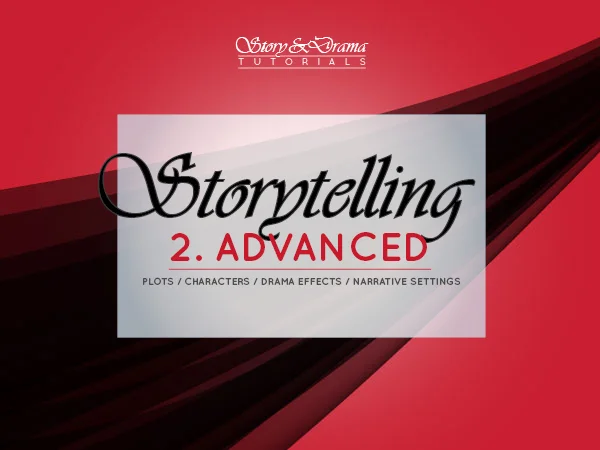 |
|
PDF, 117 pages
|
The types of fiction chronologies
There are several types of time in stories…
The time it takes for events to happen
Events time: the time that is evoked or described in a story / plot / process
- A trip that takes years, a sex scene lasting (only 😉 ) ten minutes
- A biography telling the life of a character over sixty-five years
- A battle during four hours, etc.
And the time that fiction takes to tell those events.
Telling time: the time it takes for the narrative info to be told to the audience
- 2h for a movie like The Godfather
- 5 minutes for a music video – or more in the case of Thriller
- 24 minutes for a TV series episode
- 1-2h for a show
- 5-20h for a novel, etc.
So, we have events time and telling time – complex notions, varying according to your media.
In a few words / pictures / sounds we can describe the evolution of universe from the Big Bang to now – of course we can not be complete, but just sum up the main lines: then, a few moments of telling time are meant to represent billions of years of events time.
And we can also take 2 minutes of film to describe 2 seconds of reality: showing for example, in slow-motion, the adventures of a drop falling from the sky down to our eye, or a bullet crossing through the air to the head of the US President…
We have several ways to connect – or disconnect – those times:
- It is easy to synchronize reality and fiction times in music and film, in which one minute of driving can easily stand as one minute of watching the movie. Easy too, to desynchronize, go forward quicker, play with time.
- It is less obvious to synchronize telling time and events time in written/printed media (what is “one minute of book”? “one minute of photo-novel”?), abstract media (“one minute of graphic animation”? “one minute of Japanese Nô theater”? “one minute of political journalism”?), or live media (theater, dance, show).
The order of telling can be chronological, or not
Chronological: all facts are told in the order they happened. Actually, this is rarely used…
Let’s say we have a plot A, that tells events A1, A2, A3, etc.
A chronological telling would tell events in this order:
A1 / A2 / A3 / A4 / A5
Most of the time, a story is told partly, in a non-chronological order, and with variations around the duration of events
Anyway there is still an order – the one of the dramatic revelation of essential informations:
A5 / A3 / A2 / A4
Here, the order has been reverted, the step A1 is not told any more (that is called an “ellipsis”), the step A3 has been shortened and the step A2 and A4 are now told with a longer duration than in reality.
Time scale
There is a special relationship between the scale (size, length, duration, amplitude…) of the telling time, of the events time, and of the real time we all experience in real life.
Ratio real time / narration time:
Telling time = events time = real time
In this case, the time it takes to tell an event equals the time it takes for this event to happen, which matches perfectly our reality time (seconds, minutes, etc). Ex: The Russian Arch. In this movie, 1 hour of events is told in strictly 1 hour of show.
Telling time shorter than events time
That is the case of most stories: we eliminate all that is not about a given goal/situation. A night, 10 days, an election campaign, some summer holidays full of adventures, are reduced to 2h of movie, 8 hours of reading, 1h20 of play, etc.
Telling time longer than events time
Slow-motion / zoom on a character. Often used in love scenes: the 2 lovers are making love in slow-motion, which makes a 3 minutes scene from events that took only 1 minute to happen.
Scenes told twice or more, in crossed stories, also take more time to be told than they took to happen. Ex, the same car crash taking 1 minute in real time and 1 minute of film, will be told 3 times and thus take 3 minutes of film.
Out of time / zero duration: taking media time not to tell anything
Ex, we describe an empty room during 5 minutes of film or 10 pages of novel; then something happens. Duration was 0 because the scene was interpreted as an “out of time” description. But, if the empty room is being seen from the point of view a character, then telling time is read as real-time.
(…)
Want to know more ? Then read our tutorial about How to write a story.